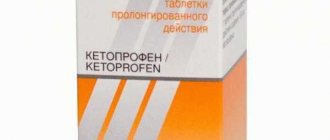Intercostal neuralgia occurs against the background of inflammation or compression of the nerves and is manifested by intense, sharp “shooting” in the chest area. The pain intensifies with movement, breathing and significantly limits activity. For intercostal neuralgia, physical therapy is of no small importance. In combination with drug treatment, it helps to get rid of pain in the shortest possible time.
Therapeutic exercises for intercostal neuralgia
The disease can be caused by various reasons, and therapeutic exercises are not effective for all types of intercostal neuralgia. An example is compression-ischemic neuropathy, if this condition is caused by a pinched nerve due to injury or deformation of the musculoskeletal system. In this case, surgical intervention is necessary.
In the event that neuralgia is associated with an inflammatory process (for example, against the background of a viral infection, local hypothermia), physical activity is not only ineffective, but also dangerous. They can increase the inflammatory response and swelling.
Important!
In order not to aggravate the situation, you should not start training on your own. You must first consult a doctor who will determine the cause of the disease and select exercises in accordance with the severity of the condition.
Gymnastics is most effective in the treatment of intercostal neuralgia, which has developed against the background of spinal diseases (osteochondrosis, scoliosis) or as a result of short-term positional compression of the intercostal nerve (for example, sleeping in an uncomfortable position, long periods of time at the computer in a forced position).
With this pathology, exercise therapy exercises are aimed at releasing nerve fibers, reducing pain in the chest and back, strengthening the muscles of the thoracic region, which should protect the nerve trunks from the surrounding bone structures.
The influence of exercise therapy on the course of the disease
Exercise therapy for intercostal neuralgia is most effective for treating this disease. The set of classes is selected by the physician on an individual basis. This takes into account factors such as the severity of the disease, the patient’s well-being and symptoms of the disease.
- How does physical therapy affect the course of the disease:
- restores proper movement of the ribs;
- relieves spasms, reduces muscle tone;
- prevents congestion in joints;
- gives energy and strength, lifts your spirits;
- For pregnant women suffering from intercostal neuralgia, exercise therapy allows them to achieve amazing results and avoid taking medications.
In this article you can get acquainted with video and photo sets of exercises for correcting posture. Here you can find out what gymnastics you can perform for a herniated lumbar spine. An effective exercise therapy complex for lumbar osteochondrosis is selected here: https://zdorovya-spine.ru/uprazhneniya-i-gimnastiki/pri-osteohondroze/pri-poyasnichnom/lfk.html
Indications and contraindications for classes
Gymnastics is recommended by doctors for:
- Subacute stage of the disease, when the main symptoms are relieved and there is no sharp pain;
- Neuralgic pain associated with degenerative changes in the spine;
- Nerve irritation caused by curvature of the spinal column;
- Positional intercostal neuralgia.
Contraindications to therapeutic exercises are:
- Intense pain;
- Increased temperature, inflammation, swelling, skin rashes in the projection of the nerve trunk (this indicates the infectious nature of the disease);
- Compression-ischemic neuropathy requiring surgical correction;
- Severe concomitant pathologies of internal organs;
- Serious changes in the spine (large disc herniations, instability, vertebral displacement);
- Pregnancy.
Note!
In the early stages of neuralgia, exercise can increase nerve damage. During this period, the exercises performed can cause acute pain even by just taking the starting position and deep breathing. Therefore, exercise is allowed only a couple of days after the pain has subsided.
Diagnostics and specialists
To confirm the diagnosis, you need to contact a neurologist. During the examination, the doctor will use palpation to determine the areas of the affected nerve and prescribe an ECG and ultrasound of the heart to exclude pathologies.
If necessary, the patient will be asked to undergo magnetic resonance imaging (MRI) of the spine for a more accurate diagnosis and choice of treatment regimen.
Types of exercise therapy for intercostal neuralgia
Exercise therapy for neuropathy of the intercostal nerves primarily includes stretching exercises for the thoracic region. At the same time, the use of necessary equipment, such as elastic bands, gymnastic sticks, hoops, dumbbells, and fitballs, is highly effective. In addition, tasks to strengthen the pectoral muscles, elements of yoga, water aerobics, and proprietary techniques that have their own specifics are important. Let's take a closer look at each training option.
Set of exercises
The tasks of the classic exercise therapy complex consist of dosed loads on the pectoral muscles. It is recommended to do 10-12 approaches.
- Place your feet shoulder-width apart and place your palms on your waist. Smoothly tilt the body 5 times in one direction, 5 times in the other.
- We spread our arms to the sides, then, bending our elbows, bring our hands together in front of our chest. We also do 5 turns of the body in each direction.
- We perform deep squats with a straight back. You can hold on to the support with one hand.
- We sit on a stool, clasp our hands together and place them behind our heads. We tilt the shoulder girdle back, bending the spine.
- We lie down on a horizontal surface. We bend our knees and pull our feet closer to our buttocks. Alternately bring each thigh closer to the chest.
- We turn over onto our stomach, placing our arms along the body. At the same time, we raise our head, shoulder girdle and lower limbs, arching our back.
Gymnastics Dikul
The following exercises, proposed by Valentin Dikul, allow you to get rid of the symptoms of intercostal neuralgia and prevent their reoccurrence. You need to spend at least ten seconds on each task.
- Spread your straightened arms to the sides and swing them back, connecting your shoulder blades.
- Clasp your hands behind your lower back. Lift them up as much as possible.
- Now clasp your hands in front of your chest in the same way, turn them over with your palms facing forward. Pull your arms first forward, then up.
- We repeat task No. 2, but in a sitting position. We clasp our hands behind the lower back, lean forward, placing our chest on our hips. We pull our straightened arms up.
- Still sitting, extend your arms towards the ceiling, bend at the elbow joints. Pull one hand down, behind the back, towards the shoulder blades, pull it up by the elbow with the other hand.
- We lower one arm and shoulder down, bringing our fingers as close to the floor as possible, while tilting our head in the opposite direction.
- While lying on your back, bend your knees and place your shins on the seat of a chair. Raise your straightened arms above your head and lower them down, parallel to your body.
- Turn over face down, put your arms above your head, put your legs together, rest your chin on the floor. Having fixed your chin and feet in one position, arch your back upward, trying to maintain this position for as long as possible.
Yoga
It is acceptable when acute attacks of pain have already been stopped . Exercises are not intended for a sick body and can make the situation worse.
In addition, asanas (yoga poses) require proper breathing, sometimes abdominal breathing is needed, and sometimes chest breathing. It is better to breathe while relaxing your abdominal muscles to relieve stress from the intercostal spaces.
Staying in an uncomfortable position for a long time, which is typical for yoga, can cause spasms or lumbago.
Based on all that has been said above, we can conclude that it is advisable to do yoga for intercostal neuralgia under the supervision of a specialist , and if this is not possible, then before starting yoga you should take a course of exercise therapy and make sure that there is no pain.
Simple asanas:
- Tadasana . Place your arms along your body, connect your heels, straighten your chest, tighten your stomach. Stay in this position for several minutes. Abdominal breathing. This asana is aimed at restoring the energy of the body.
- Vrikshasana - from the tadasana pose, raise your arms, join your palms, throw your head back (as far as possible), bring your shoulder blades together as much as possible. Hold the pose for as long as possible. Abdominal breathing.
- Varibhadrasana - standing with a straight back, place your palms near your chest, legs slightly apart. Turn your body slightly to the side, raise both arms and one leg. The back should be arched. Hold this position for a few seconds, then repeat the exercise in the other direction. Breathing while performing the asana is abdominal.
- Bhujangasana - snake pose. Lie on your stomach, while inhaling, lift the front of your body, and while exhaling, bend back. This asana strengthens the muscles of the entire spine. Abdominal breathing.
- Ardha navasana - half boat pose. From a lying position on your back, simultaneously raise your straight legs and body. Pull your arms forward. The pelvis and lower back are pressed tightly to the floor. Hold the pose for 5 seconds, then lower your body and legs to the floor and relax. Repeat 2-3 times. This pose is very good at relieving tension in the pectoral muscles. Abdominal breathing.
Video about yoga for intercostal neuralgia - pain when inhaling, under the shoulder blade:
Useful video - Intercostal neuralgia can be easily removed
Bubnovsky's exercises
Doctor of Medical Sciences Sergei Bubnovsky has developed an original method for treating pain in various pathologies of the musculoskeletal system. It is also recommended to duplicate each element 10 times.
- Lie flat on the floor with your limbs extended. As you exhale, raise your pelvis above the floor, squeezing your buttocks, and lower it as you inhale.
- Place your hands behind the back of your head, bend your knees. Press your hips towards your stomach and ribs and at the same time lift your head and shoulders off the horizontal surface. The chin should touch the chest.
- Take a knee-elbow position and pull your body forward without bending your lower back.
- In the same position, lower yourself down on your elbows, bringing your shoulders closer to the floor.
- Now you need to straighten your arms and rest your palms on the floor. As you inhale, bend your back down and throw your head back. As you exhale, straighten your spine.
- Similar to the previous task, we either bend our back down or bend it up.
- Standing on all fours, we alternately shift our body weight to the right and then to the left leg, while extending the same arm forward.
Attention!
Doing such gymnastics through pain is prohibited. If the movements simply cause discomfort, then this is acceptable. And if severe pain occurs, the exercise should be stopped.
Stretching the thoracic muscles
This gymnastic complex will relieve the nerve trunks from compression by the structures of the musculoskeletal system. We do 6 approaches.
- We place the left hand on the sternum, the right hand on the back of the head. We lean to the left, putting our right elbow up. Then we change sides.
- We get on all fours. We place our left hand on the collarbone of the same name. We turn the body to the left, extending the elbow upward. We repeat similarly with the second hand.
- Similar to the previous task, we put one hand behind our back and perform a turn according to the same pattern.
- Take light dumbbells. We lie down on the floor, placing our hands with dumbbells above our heads. Raise them up perpendicular to the body.
- As in the previous task, we pull the dumbbells up, only the arms should initially be spread on different sides.
Yoga
Elements of yoga must be performed strictly during the period of remission. This is more of a preventative rather than a curative measure. Yoga asanas affect not only the thoracic region, but also the entire spinal column as a whole, the abdominal muscles, and the functioning of the internal organs. Each pose should be held for at least 5 seconds.
- "Mountain Pose" We stand straight, arms at our sides, feet joined together, stomach slightly pulled in, back straightened. We stretch the top of our head towards the ceiling.
- "Half Boat Pose." We lie on our backs, bend our legs at the knees, lift our head and shoulders up, stretch our arms forward, and press our lower back to the floor. Then we straighten our knees, keeping our legs suspended.
- "Cobra Pose." We turn over onto our stomach, join our legs, and rest our hands on the floor under the shoulder joints. Gradually straighten your arms and raise your head and body upward, resting on the floor only with your pubis and legs. Try not to bend your lower back too much. Tilt your head back.
- "Tree Pose." We stand up straight. We bend the right leg, move it outward, and place the sole of the sole with the toes down on the inner surface of the left thigh. As you inhale, raise your arms above your head, bringing your palms together, fingers pointing upward. We breathe deeply and measuredly. Then we duplicate the pose, changing legs.
Note!
It is almost impossible to perform all the asanas correctly at once. Therefore, several yoga sessions should be conducted with an instructor who will correct and guide your actions.
Exercises with auxiliary objects
Exercise therapy for intercostal neuralgia can be performed using auxiliary objects. The most effective exercises:
- For this exercise you will need a fitball and a rubber band folded in two. A fitball is a large elastic ball from 45 to 95 cm in diameter. You need to sit on the ball, then one end of the rubber band is thrown onto the right foot, and the left one remains to the side. The other end of the tourniquet must be held firmly in your right hand. The elbow of the left hand rests on the left knee, then, as you exhale, the right arm straightens diagonally. Gradually the number of repetitions can be increased to 15.
- Sitting on a fitball, you need to bend back, clasping your hands behind your head, then smoothly turn your body left and right.
- You will need a roller made from a towel. A towel folded in four is placed between the shoulder blades or under the lower back, depending on the location of the pain. The legs should be placed on the fitball, and the arms should be moved so that the hands are near the ears. In this case, the shoulder blades need to be raised about 10 times.
Exercise therapy not only allows you to treat pinched intercostal nerves at home, but is also an effective prevention of this condition. It is important to follow all the rules and precautions, you need to increase the load gradually and not skip health-improving workouts, then gymnastics will be beneficial and will become an effective addition to drug and physiotherapeutic treatment.
Technique and implementation features
Before you start training, read the basic rules of training:
- Gymnastic elements should be selected by a physical therapy doctor individually, taking into account the severity of changes and initial physical fitness;
- You can start the main workout only after a five-minute warm-up: stretch, walk in place, rotate your head and arms;
- Increase the loads gradually, starting with a minimum number of approaches;
- All movements must be carried out at a smooth, slow pace;
- If pain occurs all the time when performing a certain task, then it is better to abandon it;
- Exercise regularly, daily. Spontaneous physical activity can only disrupt all compensatory mechanisms. The body must be ready for exercise;
- Arrange short physical exercise sessions at work, they will prevent a relapse of intercostal neuralgia.
Exercise therapy for neuralgic pain helps not only to get rid of it faster, but also to avoid pathology in the future. On the one hand, gymnastics makes it possible to find a balance between contracting some muscles and relaxing their antagonists, on the other hand, it directly affects bone structures, forming correct posture and ensuring flexibility of the spine. To choose the right complex, you must first consult a specialist.
Rules for performing exercises
In order for classes to be more effective and safe, the following rules should be followed:
- Health training should begin with a light warm-up.
- Movements should be made smoothly, without sudden movements.
- There should be short breaks between exercises.
- If certain movements cause pain, you should stop them immediately.
When doing therapeutic exercises for intercostal neuralgia, it is necessary to include basic exercises in the health complex, such as bending the body, squats, and arm swings. There is also a set of additional exercises that significantly increase the effectiveness of treatment, as well as exercises using sports equipment. The number of repetitions and duration of the lesson in each case is determined individually. All these types of exercise therapy are discussed in detail below.
Painkillers for neuralgia
If internal injections are not possible, painkillers can be used:
- "Melox Forte" - used for severe pain, this is a long-lasting remedy. Used once a day;
- “Spazmalgon” – has antipyretic and anti-inflammatory effects, reduces pain. Causes relaxation of smooth muscles;
- "Spazgan" is an antispasmodic with an analgesic effect. Inhibits the production of prostaglandins and has an analgesic effect;
- "Analgin" - metamizole sodium. Has an analgesic, antipyretic and anti-inflammatory effect by inhibiting the synthesis of prostaglandins;
- "Baralgin" is an antipyretic-analgesic, a pyrazolone derivative. Relieves heat and inflammation.











